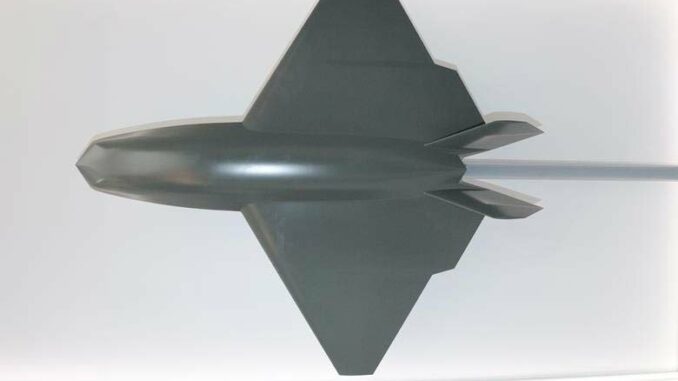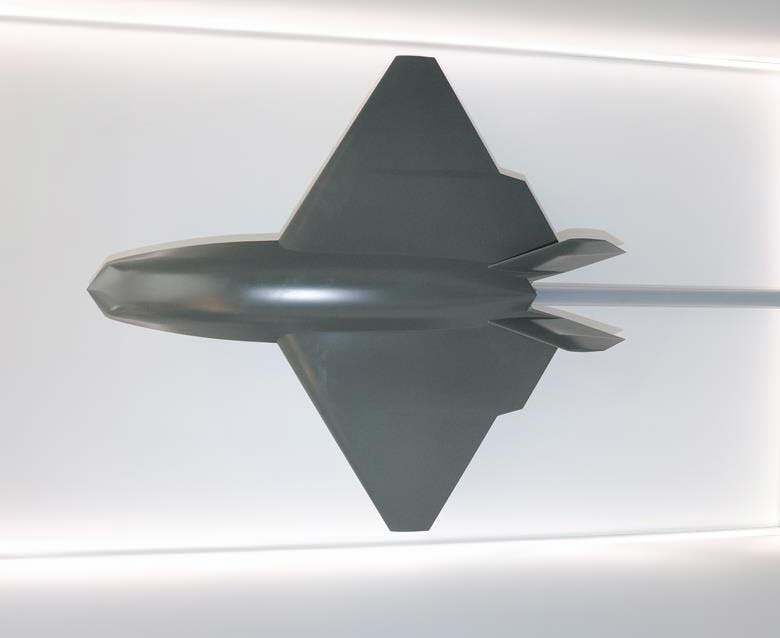
BAE Systems reveals a new collaborative autonomous platform with innovations to operate alongside current and future combat aircraft.
Aeronautical innovation: the collaborative autonomous platform from BAE Systems
BAE Systems presented a new configuration for its Attritable Collaborative Autonomous Platform (ACP) at the World Defense Show in Riyadh on February 4. This innovation represents a significant advance in the design of UAVs capable of complementing the latest and next-generation fighter aircraft fleets. The new design, featuring a diamond-delta wing and improved stealth characteristics, marks an evolution from the initial configuration presented in 2022. This modification is the result of digital engineering work aimed at optimizing the aircraft’s characteristics in terms of stealth, cost and manufacturing.
The Concept 2, the size of a Hawk trainer, is designed to carry out a wide range of missions, including surveillance, reconnaissance, electronic warfare, as well as air-to-ground and air-to-air weapons transport. The development of this platform, funded by BAE Systems, draws on almost thirty years’ experience in unmanned and autonomous air systems. Progress towards a first flight will depend on customer investment, underlining the importance of collaboration between developers and end-users in bringing this technology to fruition.

Strategic impact and challenges of the collaborative autonomous platform
The introduction of a collaborative autonomous platform like BAE Systems’ Concept 2 has far-reaching implications for international defense and security. On the positive side, these systems offer an “affordable combat mass” capability, enabling a multiplication of actors in air operations without the costs associated with manned fighter aircraft. Improved stealth and mission versatility represent major strategic assets, promising to redefine air operations and electronic warfare.
However, the development of such technologies also poses significant challenges. The need for integration into existing command and control systems, the management of interactions between manned and unmanned platforms, as well as ethical and legal considerations linked to the autonomy of weapon systems, are all complex issues to resolve. Moreover, international competition to develop and deploy these technologies is increasing, underlining the importance of international collaboration and regulation.
The approach chosen by BAE Systems, favoring systems with electric rather than hydraulic actuators to reduce maintenance and increase durability, also illustrates the importance of technical innovation in meeting logistical and operational challenges. These platforms, although less expensive than a manned fighter jet, will see their price increase with the addition of sensors and armaments, highlighting the trade-off between cost and capability.
BAE Systems’ collaborative autonomous platform represents a promising advance in defense technologies, offering new strategic capabilities while posing development and integration challenges. This innovation underlines the continuing evolution of air warfare towards an era where autonomous systems play a key role, requiring careful consideration of their deployment and ethical use.
War Wings Daily is an independant magazine.